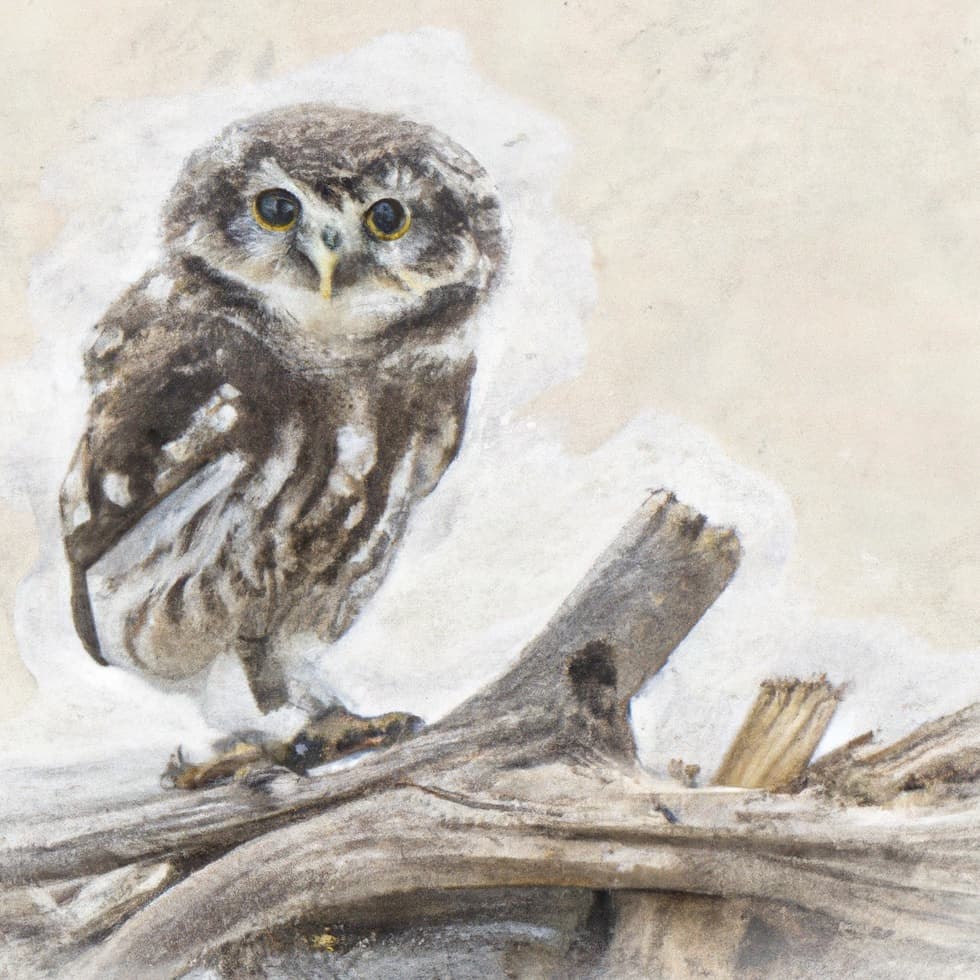
The Little Owl is a pint-sized predator that packs a powerful punch! With their distinctive markings and striking eyes, Little Owls are a favourite of many birdwatchers and nature lovers. In this blog, we’ll take a closer look at 27 curious facts about the Little Owl, and discover why this diminutive bird is such a beloved member of the bird world.
27 Curious Facts about the Little Owl
- The Little Owl is one of the smallest owl species in the world and is native to Europe, Asia, and Africa.
- They have distinctive, round heads and large, striking eyes.
- Little Owls are often active during the daytime, making them more visible than many other owl species.
- They have a relatively long lifespan for a bird of their size, with some individuals living up to 10 years in the wild.
- The collective noun for a group of Little Owls is a “parliament.”
- Little Owls are primarily insectivorous and feed on a wide range of insects, including beetles, grasshoppers, and crickets.
- They are able to breed at a young age, with some individuals breeding in their first year.
- Little Owls are able to recognise individual members of their family and will often return to the same areas to forage and roost.
- They are known for their distinctive call, which sounds like a long, drawn-out whistle.
- Little Owls are able to form long-term pair bonds and may remain with the same mate for multiple breeding seasons.
- In some cultures, owls are considered to be a symbol of wisdom and mystery.
- Little Owls are able to roost in a variety of locations, including tree hollows, old buildings, and even burrows in the ground.
- They have been featured in a variety of cultural works, including literature, poetry, and art.
- Little Owls are able to navigate using landmarks and visual cues in their environment.
- They have a relatively small range, with most populations being found within a few square miles of their nest site.
- Little Owls are vulnerable to predation by a wide range of animals, including larger birds of prey, snakes, and mammals.
- They are important insect predators and play a vital role in controlling insect populations in their habitat.
- Little Owls are often found in agricultural areas and may feed on crop pests such as voles and mice.
- They have a unique system of vocalisation that allows them to communicate with their mates and other members of their family.
- Little Owls are known to engage in courtship displays, in which the male will bow and spread his wings to attract a mate.
- They are able to blend in with their surroundings and are often difficult to spot in the wild.
- Little Owls have a relatively high reproductive rate, with some individuals producing up to 3 clutches of eggs per year.
- They are able to survive in a wide range of habitats, from urban areas to rural woodlands.
- Little Owls are a key indicator species for the health of their habitat, and their presence is often used as a measure of ecosystem health.
- They are able to feed on a wide range of prey, including insects, small mammals, and other small invertebrates.
- Little Owls are known to roost in small groups during the non-breeding season.
- Little Owls are a beloved species among birdwatchers and nature lovers, and their unique characteristics continue to inspire wonder and curiosity.
Where to Find the Little Owl
The Little Owl is native to Europe, Asia, and Africa and can be found in many habitats, including farmland, open woodland, and suburban areas. They are often found in areas with a mix of open grassland and mature trees, which provides suitable foraging and nesting habitat. Little Owls may be found in parks and gardens with mature trees and ample insect populations in urban areas.
Feeding the Little Owl
Little Owls are primarily insectivorous and feed on many insects, including beetles, grasshoppers, and crickets. Suppose you are interested in feeding Little Owls in your local area. In that case, it is important to provide them with a suitable habitat that includes mature trees, open grassland, and ample insect populations.
It is also important to avoid feeding them food that is harmful to their health, such as processed foods or bread.
Little Owls may also feed on small mammals and other birds, particularly during the non-breeding season.
Final Thoughts
The Little Owl may be small, but it is a fierce predator and a beloved member of the bird world. With their distinctive markings, striking eyes, and impressive vocalisations, Little Owls are a species that is sure to captivate and intrigue. Whether you are a seasoned birdwatcher or simply appreciate the natural world, the Little Owl is a species that is worth seeking out. So why not take a moment to appreciate the beauty and wonder of these amazing birds and perhaps even provide them with suitable habitats in your local area? With their important contributions to the ecosystem and their unique characteristics, Little Owls truly are a treasure of the bird world.